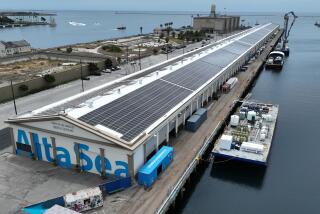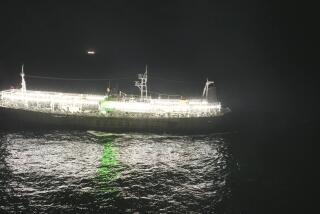Foreign tech workers on a cruise ship? SeaCode was first to try
SAN FRANCISCO -- As novel as the concept sounds, Blueseed was not the first company to take “offshoring” so literally.
In 2005, a San Diego company called SeaCode proposed housing foreign software engineers on a cruise ship three miles off the California coast.
The controversial plan to bring low-cost, offshore labor so close to California shores came under fire as a “slave ship” and “sweatshop on the sea.”
But Roger Green, an entrepreneur, and David Cook, a former tanker captain who had gone into technology, said they were simply trying to help American businesses.
Their idea was to give companies the benefit of the lower payscales of offshoring while doing away with some of the downsides: the time difference, the challenge of overseeing work being done so far away, concerns over the security of intellectual property in other countries and the high cost of redoing work not done properly in the first place.
“We were interested in giving American companies a level playing field to be productive and create good products at good cost,” Green said. “Articles said we were trying to run slave a ship, which was totally crazy. That’s not a sustainable business model. I don’t know any company that would use a company like that. We planned to ship in people from all over the world, pay them a fair wage to live in a private cabin on a ship that used to be a cruise ship. That didn’t seem like slave ship to us at all.”
SeaCode said at the time it planned to pay two to three times the going rate for foreign technology workers, about $24,000 for lower level jobs and $60,000 for senior programmers. The ship’s location would exempt it from California labor and environmental regulations and workers would not need to apply for hard-to-come-by visas to work in the U.S.
Green argued that the jobs on the ship would not only help American companies, they would create jobs on nearby shores.
He said the company never planned to just put engineers on a boat. It also planned to farm out some of the work to engineers in the U.S. and some overseas.
“Customers loved the idea,” Green said.
But SeaCode had to put the project on hold when it could not raise enough money.
“We recognize that it was a tough sell from an investor standpoint because of the newness of the idea,” Green said.
Max Marty and Dario Mutabdzija have come up with a new twist. They want to put foreign entrepreneurs on a cruise ship 12 miles off the coast of Northern California, within commuting distance of Silicon Valley but out of reach of restrictive U.S. immigration laws.
Green said the pair contacted him to tell him about their venture called Blueseed.
“They were curious about the lessons we learned,” Green said.
But Green said he has never given up on SeaCode.
“We still exist although we are not an active operation at this point. We are constantly speaking with companies that see some business advantage to our approach,” he said. “The concept is still valid. The factors that led us to conceive of the idea have not changed.”
“We still get a lot of interest,” he added.
But will their idea ever get off the ground?
“Yeah, I think if we live long enough,” Green said.
ALSO:
Shipping out U.S. jobs -- to a ship
High-tech incubator Blueseed not the first to target high seas
More to Read
Inside the business of entertainment
The Wide Shot brings you news, analysis and insights on everything from streaming wars to production — and what it all means for the future.
You may occasionally receive promotional content from the Los Angeles Times.










